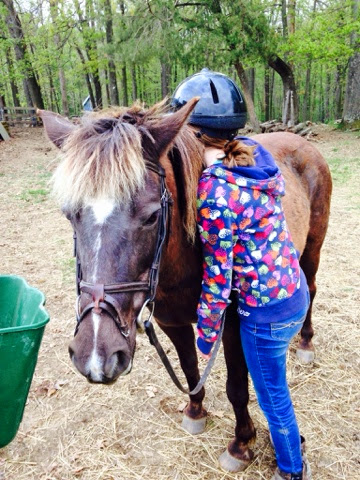Lately I've been reading Richard Maxwell's useful book, "Unlock Your Horse's Talent in 20 Minutes a Day." I've always found it to be very helpful for me in training my horses. I would like to share one very useful exercise from it. It is in the second chapter, 'Ground training from a distance.' It is about rope circling.
Rope circling is a very simple concept. It is quite similar to longing, though more interactive. In order to do this activity, your horse must be halter trained and must respond to pressure and release. You would do best with a short longe line, perhaps 12 feet. The first exercise is to take control of the horse's direction and movement. This gains the horse's attention and respect as a sort of 'herd leader.' To let the horse know what you want, you should first spin the rope towards their hind quarters so they understand to move around and face you. Once your horse faces you, you should reward him, so he begins to get the idea of what you want.

After moving his hind quarters in both directions, it's time to begin the circling. Signal which direction you want the horse to move in by swinging the rope at what will be their inside shoulder. You can re-enforce this with pressure on the horse's shoulder. Move calmly, and do not allow tension on the line. You want some slack. Signal changes in direction by stepping towards the front of them.
Eventually, start to look for the signs of join up! Join up can be done on a long line too. Begin to watch for signs such as an ear trained on you, lip chewing or licking, or a lowered head. If you see those signs, you can drop eye contact and turn slightly away from the horse. He should slow down and come towards you; if he doesn't, but just stops, then you can walk towards him in an arcing manner (not a straight line). If he follows you when you walk, reward him! You've done it :) If he doesn't, that's ok. If he walks away, continue to work him until you see the signs again. Then try again.
The true test of join up is if the horse will follow you off the rope. See below for my horses following me after I circled them! Good luck with your adventures :)
Fuzzy is such a good pony :)
It looks like I was touching her here, but I wasn't really. I was just jumping awkwardly.
Please ignore Dougie's butt in the corner of this picture! Haha. Photo credits to my 7 year old sister, they're pretty good aren't they?






















